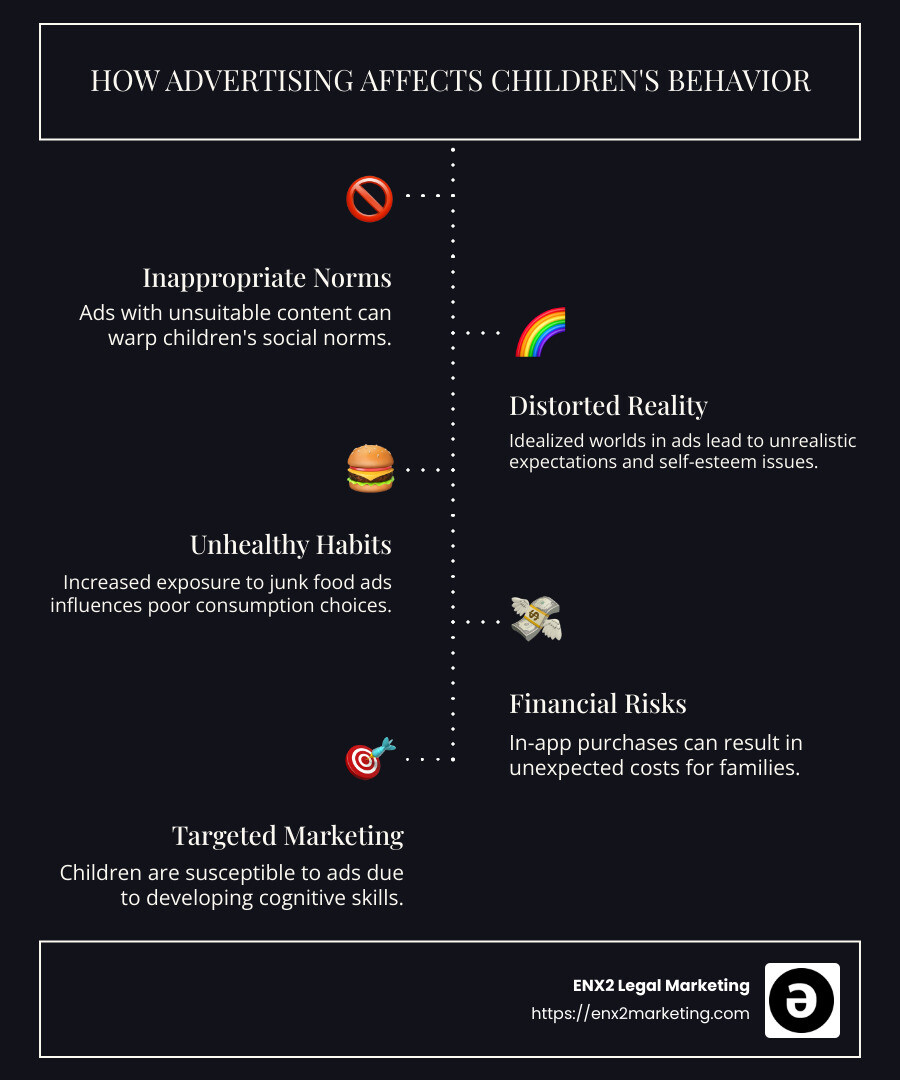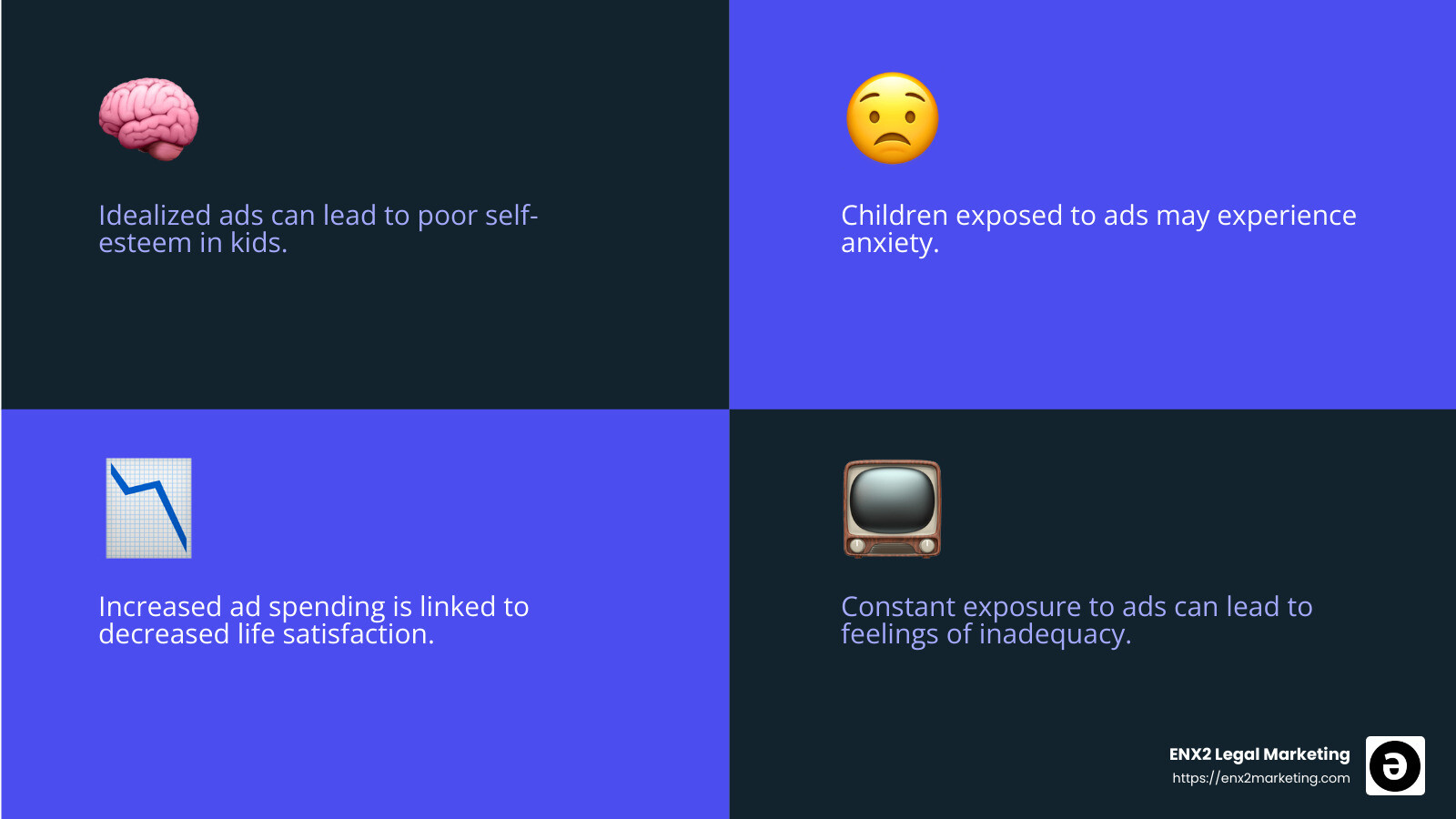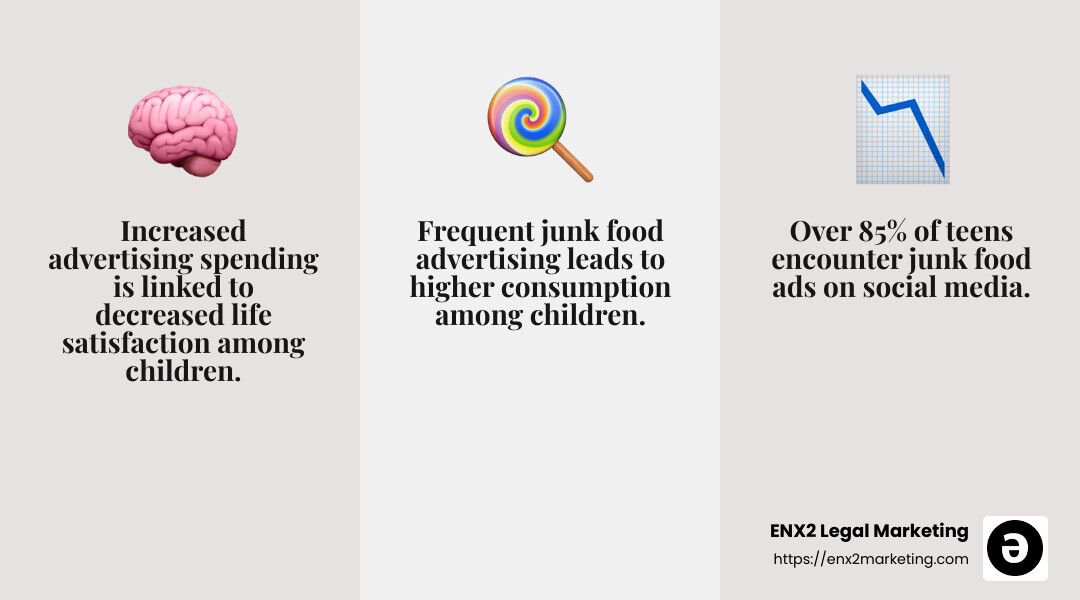How does advertising affect children’s behavior? In today’s digital era, children’s behavior is significantly influenced by the vast array of advertising they encounter. Here’s a quick look at how advertising affects them:
- Normalizing inappropriate behaviors: Exposure to ads with unsuitable content can warp children’s understanding of acceptable social norms.
- Distorted perceptions of reality: Ads can portray idealized worlds, leading kids to form unrealistic expectations and affecting their self-esteem.
- Encouraging unhealthy habits: Ads for junk food and other unhealthy options can influence children’s consumption choices negatively.
- Financial risks from in-app purchases: Children may unknowingly incur costs on games, leading to potential financial stress for many families.
The digital world is an incredibly powerful tool for advertisers. However, the impact of targeted marketing on young minds merits careful scrutiny. Children, with their developing cognitive abilities, are susceptible to the constant barrage of ads from digital platforms such as social media, gaming, and streaming services. The typical child is immersed in screens for over eight hours a day, making them prime targets for advertisers. Tech giants and policymakers face increasing pressure to create safer online environments and curtail targeted ads to protect our youngest and most impressionable consumers.
I’m Nicole Farber, an expert at ENX2 Legal Marketing. With over a decade of experience, I dig into how advertising affects children’s behavior and stay at the forefront of digital marketing ethics. My mission is to provide insights into advertising impacts and guide ethical marketing practices.

Essential how does advertising affect children’s behavior terms:
– advertisements for teenagers
– do standards exist for marketing food and beverages to children
– marketing to children
How Does Advertising Affect Children’s Behavior?
Impact on Mental Health
Advertising can significantly affect children’s mental health. The portrayal of idealized lifestyles and appearances in ads can lead to poor self-esteem and feelings of inadequacy among young viewers. When children see perfect images and lives, they may start to compare themselves unfavorably, leading to anxiety and even depression.

A study by the University of Warwick found that increased advertising spending correlates with decreased life satisfaction. This suggests that the constant bombardment of ads can make people, including children, unhappy.
Moreover, the pressure to conform to advertised standards can be overwhelming. Children may feel they need to look or act a certain way, creating unnecessary stress and anxiety. This is especially true with the rise of social media influencers who often live seemingly perfect lives.
Influence on Eating Habits
Advertising doesn’t just impact mental health—it also shapes eating habits. Ads for sugary cereals and junk food are everywhere, and they have a direct influence on children’s food preferences. Research shows that over 85% of teens see junk food ads on social media platforms like Instagram and Facebook. This exposure encourages unhealthy eating habits, leading to issues like obesity.

Studies reveal a clear link between the frequency of junk food advertising and increased consumption of these unhealthy products among children. When children see their favorite characters enjoying sugary snacks, they are more likely to want those products themselves. This not only affects their current diet but can also set the stage for lifelong unhealthy eating patterns.
In conclusion, advertising plays a major role in shaping children’s behavior, both mentally and physically. From influencing brand preferences to altering consumer perceptions, the impact is profound. Children are especially vulnerable due to their developing cognitive abilities, making them prime targets for marketers. This underscores the need for responsible advertising practices that consider the well-being of young audiences.
Risks and Challenges of Advertising to Children
Security and Privacy Concerns
Advertising isn’t just about selling products. It’s also about gathering data. Many ads, especially online, are designed to track user behavior. This means children’s data can be collected without them even knowing. Malware and phishing scams can also be hidden in ads, posing significant security risks. Children, not knowing better, might click on these ads, leading to unintended consequences like personal data theft.
Data tracking can lead to personalized ads that follow children across the web. While this might seem harmless, it raises concerns about privacy. The Children’s Online Privacy Protection Act (COPPA) aims to protect kids under 13, but enforcement can be tricky. Parents need to be vigilant about the apps and websites their kids use.
Understanding Persuasive Intent
Children’s ability to understand the intent behind advertising is limited. Cognitive development plays a big role here. Younger kids often don’t grasp that ads are trying to persuade them to buy something. They see ads as entertaining or informative content rather than sales tactics.
As kids grow, their understanding improves, but even teenagers can struggle with persuasive communication. Many ads use subtle tactics, like influencer endorsements, to make products seem desirable. This can distort reality, making children believe they need certain products to fit in or be happy.
Age limitations are crucial. Kids under 8, for example, often can’t distinguish between commercials and regular TV shows. This makes them especially vulnerable to advertising’s influence. Even older children might not fully understand the long-term implications of their purchasing decisions, leading to potential financial risks.
Inappropriate content can also slip through the cracks. Ads sometimes promote products or lifestyles that aren’t suitable for young audiences, further complicating the landscape of advertising to children.
Understanding these risks and challenges is essential for parents and guardians. By being aware, they can help guide children through the complex world of advertising, ensuring their safety and well-being.
Conclusion
Advertising’s impact on children is a complex topic, but one thing is clear: parental oversight is crucial. Parents play a significant role in helping children steer the digital landscape safely. By actively monitoring the content their children consume and discussing the intent behind ads, parents can mitigate some of the risks associated with advertising.
Media literacy is another powerful tool. Teaching children to critically assess media messages can help them understand the persuasive tactics used in advertising. This doesn’t mean shielding them from all ads but rather equipping them with the skills to question and analyze the messages they encounter. Programs that focus on media literacy can empower kids to make informed decisions and resist unwanted influences.
At ENX2 Legal Marketing, we understand the importance of protecting young minds from the potential harms of advertising. Our expertise in digital marketing and media strategies is designed to help businesses steer this challenging landscape responsibly. We believe in creating advertising that respects the audience, especially when that audience includes children.
For law firms and businesses looking to improve their online presence while maintaining ethical advertising practices, ENX2 Legal Marketing is here to help. We offer innovative solutions that prioritize both effectiveness and integrity, ensuring your marketing strategy aligns with your values.
When advertising is everywhere, being informed and proactive is key. By fostering an environment of awareness and education, we can help protect children from the negative impacts of advertising while still allowing them to enjoy the benefits of digital media.

